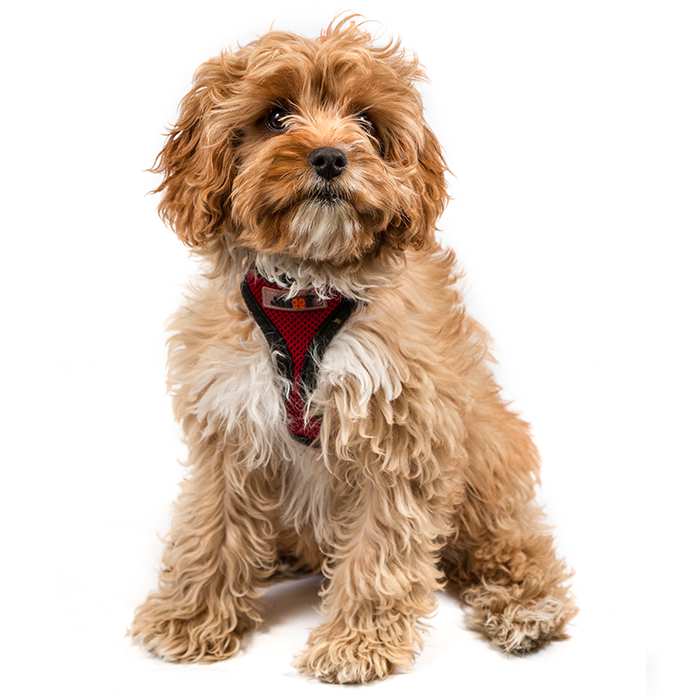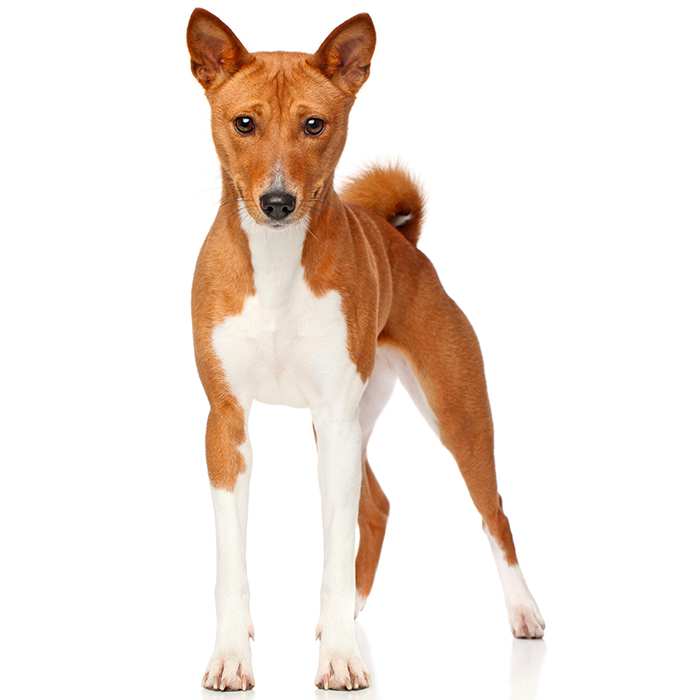Rat Terrier


| Recommended for | Active families, experienced owners, or individuals who enjoy outdoor activities |
| Breed Classification | Terrier Group |
| Other names | RT, Ratting Terrier, American Rat Terrier |
| Lifespan | 12 to 18 years |
| Size | Small to medium |
| Temperament | Lively, affectionate, intelligent, alert |
| Intelligence | Highly intelligent, quick to learn, excels in obedience and problem-solving tasks |
| Tendency to bark | Moderate; barks when excited, alerting to movement, or engaging in play |
| Maintenance Level | Low grooming needs; requires regular exercise and mental stimulation |
| Health Risk | This breed has an around average probability of having health issues in its lifetime, hence it is one of the more affordable breeds to insure. |
Insuring a Rat Terrier?
Get our award-winning Nose-to-Tail Cover with up to $30k annual benefit limit, up to 90% of eligible vet bills back, and no sub-limits.
Get a quick quote
Is this breed right for you?
Try our breed selector quiz to find out your best matching breed!
Insuring a Rat Terrier?
Get our award-winning Nose-to-Tail Cover with up to $30k annual benefit limit, up to 90% of eligible vet bills back, and no sub-limits.
Get a quick quote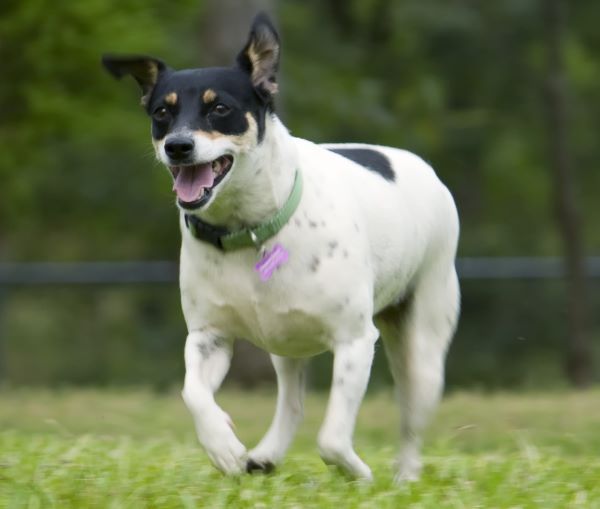
Breed history of Rat Terriers
The Rat Terrier originated in the United States in the 19th century and was initially bred by early immigrants for pest control and farm work. It was developed from a mix of European terriers that were common at the time, including the Fox Terrier, Old English White Terrier and Manchester Terrier.
By the early 20th century, the Rat Terrier had gained popularity as a skilled ratter and was one of the most common farm dogs in the USA. When a plague of Kansas Jack Rabbits invaded the Midwest, to increase the speed and versatility of the Rat Terrier, some farmers began breeding them to Whippets and Italian Greyhounds. Meanwhile, others in the Central and Southern regions bred their Rat Terriers to Beagles to bring out a stronger prey and pack drive for hunting purposes.
As farming practices evolved and the use of chemical pest control increased, the Rat Terrier’s role shifted. Though still possessing a strong prey drive, its adaptability and affectionate nature made it well-suited for companionship, and it transitioned into a family pet.

Physical description of Rat Terriers
The Rat Terrier is a small to medium-sized dog with a lean yet muscular build, a well-proportioned body, a deep chest for endurance, and a strong, straight back. Its head is slightly wedge-shaped, with a well-defined muzzle, expressive dark eyes, and large, upright or semi-erect ears.
Its short, smooth, shiny coat is ‘pied’ or bi-coloured, with one colour being white and a variety of second colours, including black, tan, red, chocolate, lemon or blue.
| Weight range | 4 to 11 kg (9 to 24 lbs) |
| Height range | 25 to 46 cm (10 to 18 inches) |
| Colours | White with black, tan, red, chocolate, blue or lemon |
| Coat length | Short, smooth, sleek and low-maintenance |

Rat Terrier personality and temperament
The Rat Terrier is an energetic, intelligent, and affectionate breed with a lively and playful nature. Thriving in active households, Rat Terriers form strong bonds with their family and enjoy interactive activities. While friendly and outgoing, they have natural hunting instincts, making them highly alert and attentive to their surroundings, and are good watchdogs.
Rat Terriers enjoy a variety of activities, including agility, obedience, and interactive games that keep both their mind and body engaged. While they adapt well to different living environments, they require daily exercise and mental stimulation to remain happy and well-balanced. They are capable of entertaining themselves but prefer companionship and do best in homes where they receive plenty of interaction and engagement.
Without regular physical activity, the Rat Terrier may become bored and develop behaviours such as excessive barking, digging, or chewing. Because of their strong prey drive and independent streak, early socialisation and consistent training are essential to ensure well-mannered behaviour.

Rat Terriers with kids and other pets
The Rat Terrier is an affectionate and playful breed that can form strong bonds with children when introduced and trained properly. Its high energy and enthusiasm make it a fun and engaging companion for active kids, but supervision is essential, especially with younger children, as its excitement can sometimes lead to boisterous behaviour. Early socialisation and positive interactions will help the Rat Terrier learn appropriate play manners.
Rat terriers generally get along well with other pets, particularly when raised together, but their strong prey drive may cause them to chase smaller animals. While they can coexist with other dogs, careful introductions and consistent reinforcement are necessary, especially in multi-pet households. Training from an early age will help reduce the likelihood of territorial instincts and foster harmonious relationships with other pets.

Rat Terrier training and exercise
The Rat Terrier is a high-energy breed that requires daily exercise to stay happy and well-balanced. Long walks, playtime, and mentally stimulating activities such as agility, lure coursing, or scent work help keep this active dog engaged. Due to its strong prey drive, the breed enjoys chasing games and opportunities to explore its surroundings.
Training a Rat Terrier requires patience and consistency, as this intelligent breed has an independent streak. While eager to learn, it responds best to positive reinforcement methods like praise, play, and treats. Early socialisation is essential to help the breed develop confidence and good manners around people and other animals. Regular training sessions that introduce new challenges will keep the Rat Terrier mentally stimulated and prevent stubborn or mischievous behaviours.
| Energy level | High |
| Exercise requirements | High |
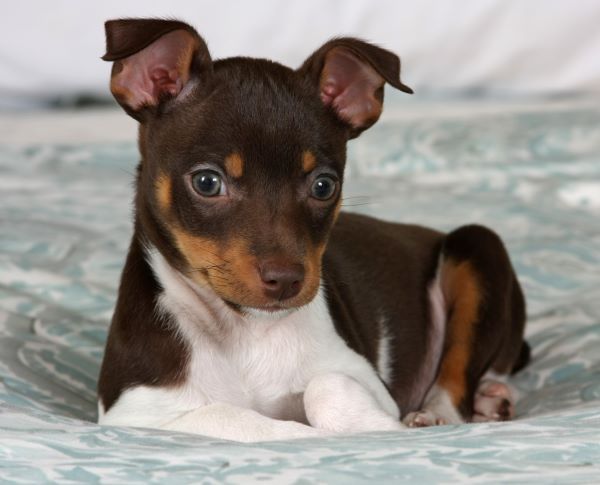
Rat Terrier feeding and nutrition
The Rat Terrier’s dietary needs vary based on age, size, and activity level. Puppies require a protein-rich diet to support healthy growth and muscle development, while adults need a balanced diet to maintain their high energy levels. Senior Rat Terriers benefit from lower-calorie meals and joint-supporting nutrients to prevent weight gain and maintain mobility. Adjusting portion sizes according to activity levels helps ensure they stay in optimal health.
Managing calorie intake is essential, as the Rat Terrier is an active breed but can gain weight if overfed. Measured portions, controlled treats, and regular exercise help prevent obesity-related issues. Routine veterinary check-ups ensure their diet meets their specific needs, with professional guidance on nutrition, supplements, and overall health care.
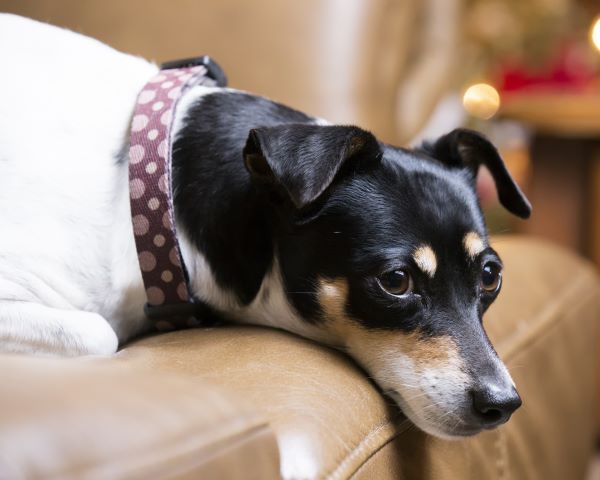
Rat Terrier care and grooming
The Rat Terrier has a short, smooth coat that is low-maintenance and easy to care for. Its sleek fur provides protection against the elements, though it lacks a thick undercoat. Shedding is moderate throughout the year, with slightly increased shedding during seasonal changes. Regular grooming will help maintain coat health and reduce loose hair in the home.
Brushing once a week is sufficient to remove dead hair and keep the coat looking healthy, though more frequent brushing may help during shedding periods. Bathing should only be done as needed to avoid stripping the coat of natural oils. Routine nail trimming, ear cleaning, and dental care are important for overall hygiene. The Rat Terrier does not require trimming or clipping, as its naturally short coat remains neat and manageable.
Health issues for Rat Terriers
- Hip Dysplasia is a genetic condition that affects hip joint development, leading to pain, stiffness, and mobility issues. Proper weight management and moderate exercise can help reduce discomfort.
- Luxating Patella is a condition where the kneecap slips out of place, causing lameness or difficulty walking. Mild cases may not require treatment, but severe cases may need surgical correction.
- Progressive Retinal Atrophy (PRA) is an inherited eye disease that leads to gradual vision loss and eventual blindness. Genetic testing helps identify carriers and prevent passing the condition to offspring.
- Legg-Calvé-Perthes Disease is a degenerative condition affecting the hip joint, leading to limping and pain. Early diagnosis and treatment, including surgery in severe cases, can improve mobility.
- Primary Lens Luxation (PLL) is a condition where the eye’s lens becomes dislocated, causing discomfort and potential vision loss. Early veterinary intervention can help manage symptoms.
- Cardiac Issues such as heart murmurs and mitral valve disease can occur in the breed. Regular veterinary check-ups help detect and manage these conditions early.
Not all conditions are covered by Pet Insurance. For details of Bow Wow Meow Pet Insurance cover, refer to the Product Disclosure Statement.
Free engraved pet ID tag on sign up3
Customer Satisfaction
21 day cooling off
Easy to use Pet Portal

GapOnly® in vet claims
MORE INFORMATION
Rat Terrier Club of America: https://ratterrierclubofamerica.org/
Rat Terrier Club of Canada: https://ratterrier.ca/


